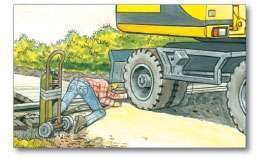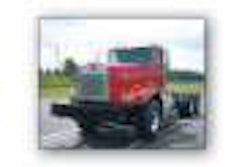Alert and aware
Know what’s around you – and behind you – at all times.

The bottom line: A post-accident investigation determined the excavator’s backup warning alarm was broken. Also, the spotter assigned to the area was concentrating on monitoring adjacent rail traffic, and failed to watch the workers around the excavator. Additional investigation discovered the excavator operator had failed to attend required safety training.
Check everything before you start your day.
All of your excavator’s systems must be in good working order. Things to look out for:
• Broken, missing or damaged components or safety items
• Cut, worn or damaged tires or tires at improper pressure (if wheeled)
• Broken or damaged pins or bushings (if tracked)
• Adequate fluid levels
• Debris in the coolant or loose fans in the cooling system.
Make any necessary repairs and replace and secure any missing items prior to operating the machine.
Warn other workers
Don’t just rely on your spotter to make sure you’re in the clear. Walk completely around your excavator before you start it, ensuring no one is under or around the machine. Sound your horn to let everyone know you’re ready to go and then wait until all other workers are completely clear of the machine.
Once you’re moving, keep in mind you’re not alone on the site. Although your mirrors are an essential tool, also take a good look around before you back up to check for other people, as well as for obstacles. If you have additional workers or subs on site, such as a welding crew, ask for a spotter to be assigned specifically to them while you’re working.
Take safety seriously
Your employer should have a comprehensive safety program in place that teaches you to recognize hazards and avoid unsafe conditions. Never skip a toolbox talk or other safety meetings. Take the time to familiarize yourself with the equipment manufacturer’s recommendations for safe operation of your excavator. Most manufacturers have safety videos specific to their machines – ask your employer if this is something available to you. If you still have questions following safety training, talk with your supervisor about your questions or concerns prior to proceeding. In addition to conducting your own machine walk-around, evaluate the site beforehand so you’ll be aware of areas you need to avoid. EW
Information for this Safety Watch is from an actual accident, the Association of Equipment Manufacturers and the Center for Disease Control’s National Institute for Occupational Safety and Health. It is meant for general information purposes only.











